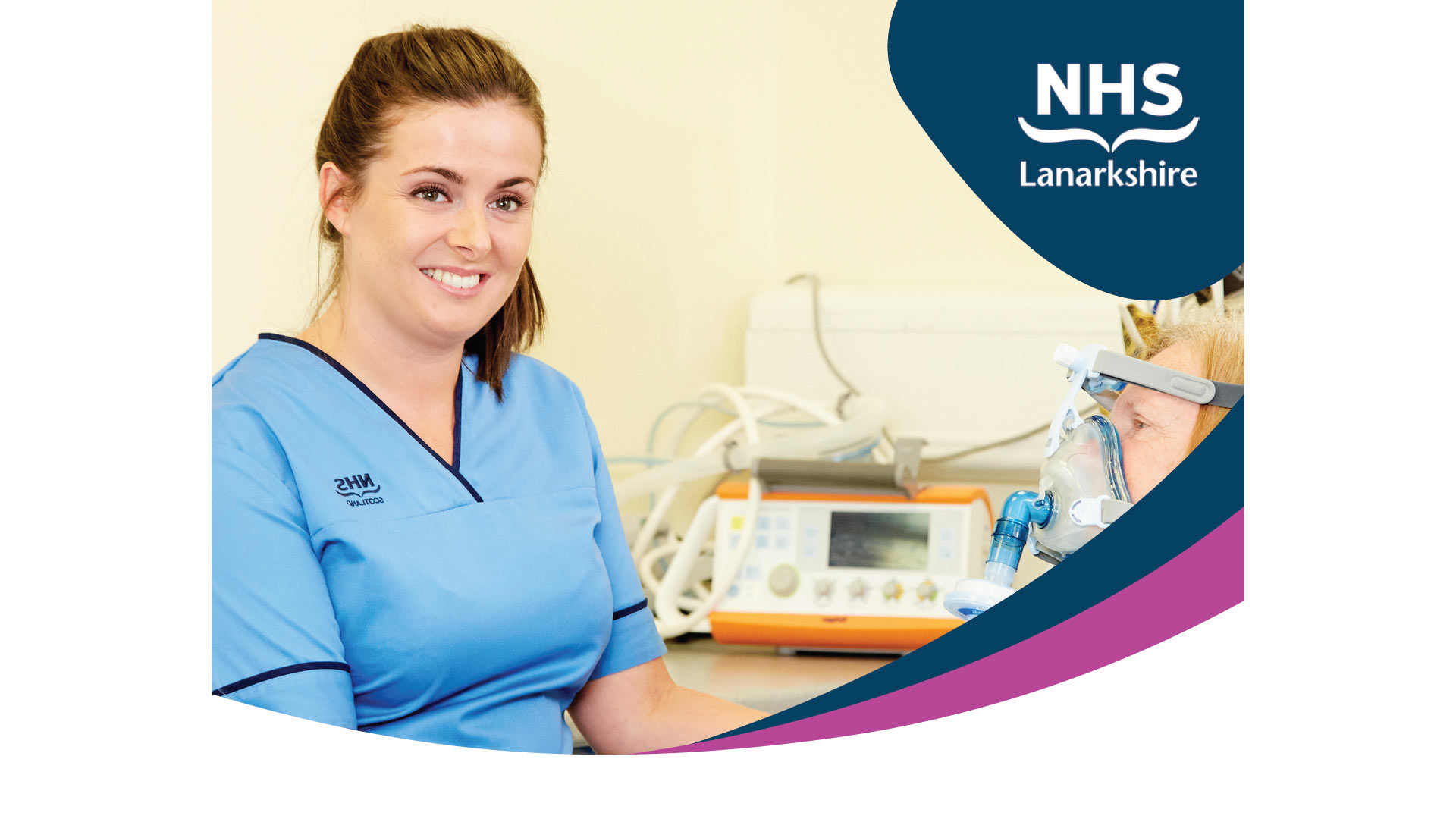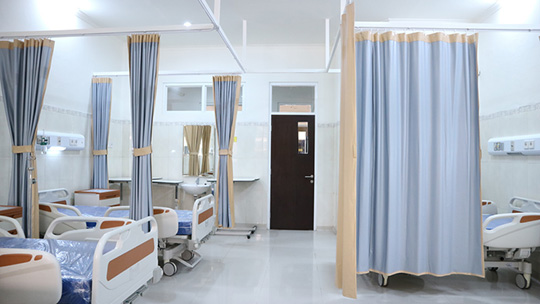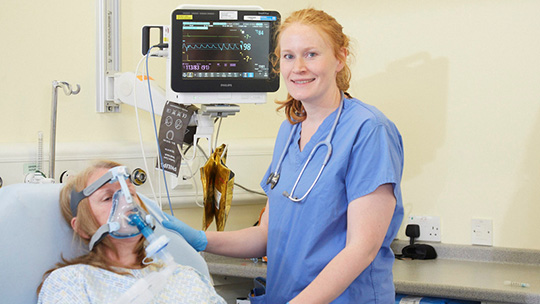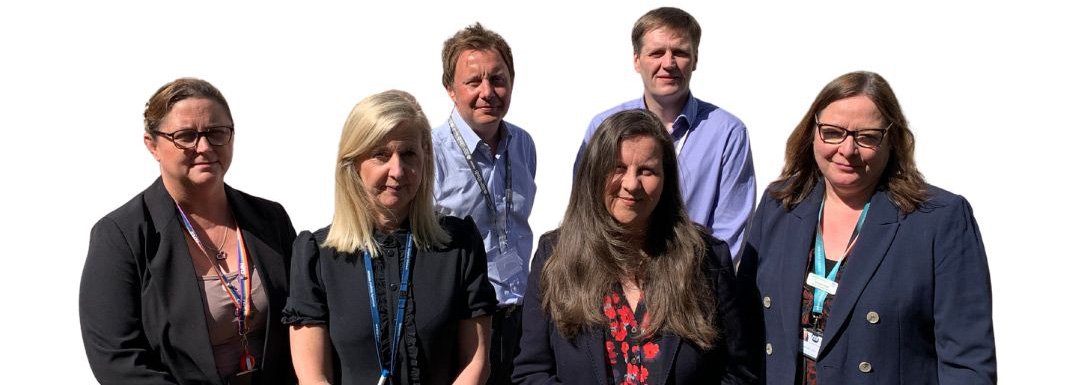Operation FLOW 2

Operation FLOW Playbook
What is a playbook?
A playbook is a document that collects all the linked processes, policies, and standard operating procedures in one place. It tells team members, from existing staff to new employees, the basics of how we do things, why it is important, and each person’s roles and responsibilities to achieve our aims.
Chief Executive Message
Operation FLOW is a clear plan to help us redesign and rebuild our services to be more resilient, and for Lanarkshire to be a good place to be cared for and to work. There is nothing more important than our people.
I am really grateful for the amazing response from our staff and partners to Operation FLOW. The whole system pulled together in February 2023 to make the Firebreak a such a success. I am now asking you once again to rise up and work with us on Operation FLOW 2 to make the changes we desperately need in Lanarkshire.
Every person, every penny, every week, every action makes a difference. Together we can make Lanarkshire a brilliant place for our patients and staff. The huge prize ahead for all of us in getting it right is that we go into winter period confident that our system is robust and resilient to deliver high quality and safe patient care while ensuring staff wellbeing, even when our system is at its busiest.
Professor Jann Gardner
Chief Executive
NHS Lanarkshire
Operation FLOW Timeline
Operation FLOW (Focused, Lanarkshire, Optimal, Whole System) is an ongoing improvement journey. There are current three phases planned, each building on the previous phase.

Operation FLOW 1
January 2023 – March 2023: The start of our journey to improve flow and improve the experience for our patients and staff. Phase 1 included the successful Firebreak in Feb/Mar to test new approaches and reduce pressure on our system.

Operation FLOW 2
April 2023 – December 2023: Learning from phase 1 to improve flow in a sustainable way. New Task and Finish groups developing models of care. Securing extra staffing needed to embed new ways of working for a more resilient system throughout winter.

Operation FLOW 3
From early 2024: Building on the experiences and learning from phase 2 drive further redesign of services to evolve a sustainable whole-system Lanarkshire model.
Operation FLOW Ethos
Operation FLOW Ethos
Operation FLOW is rooted in an ethos of making a difference by embedding the good work that we do together. This means:
- Working as one whole-system Lanarkshire team
- Demonstrating a commitment to learning and improvement
- Showing leadership at all levels

Flow Foundations Bundle and Pathway
Flow Foundations Bundle and Pathway
Operation FLOW (Focused, Lanarkshire, Optimal, Whole System) is an ongoing improvement journey. There are current three phases planned, each building on the previous phase.
The Flow Foundations Bundle is a combined set of simple rules for all receiving and inpatient wards to improve patient flow and prevent unnecessary waiting for patients.
The bundle consists of:
- Knowing and using the ward daily Discharge Beat to supportflow
- Structured Board Rounds (x 3 times / day in Acute settings x 1 daily in non-Acute sites)
- Setting Planned date of discharge (PDD)
- Criteria to reside for every patient
- Criteria-led Discharge
- Increasing Pre-noon Discharge and Use of Discharge Lounge
- Real updating of patient movements on Trakcare
We have a discharge pathway as outlined on the this page and included in the Resources section within the playbook PDF, which outlines the task for preparing for discharge depending on the complexity.
Oversight by three-times daily site huddles with clear communication and escalation processes in place which ensures current and forward planning to support flow along with creating ward, site and system situation awareness.
Understanding your role and the responsibilities of the wider team, across the whole system, in embedding the flow foundation bundle is key to our success of achieving safe and effective patient flow.

Patient Pathway
The following four pathways are adapted from the Centre of Sustainable Delivery’s Pathways Based Planning. The pathways increase in complexity.
Pathway 1 – Simple
In each ward: every day
- Protect time to plan/prepare (3 x Daily Board rounds)
- From admission, set a Planned Date of Discharge as a team with patient/significant others
- Adopt a ‘day before’ approach to discharge letter, drugs, transport booking, etc.
- Ordered Ward Rounds (sick, discharges, others)
- Use Criteria-led discharge
- Discharge Beat to support hospital flow
- Discharge Lounge as default to support pre-noon discharges
- Communicate and escalate where flow barriers exist
As a site: x3 / day huddle
- Robust operational management, x3 times / day effective huddles
- Monitor ward level and site level metrics
- Support resolution of escalated flow barriers
- Real time update of Trakcare for patient moves
Pathway 2 – Moderate
Do all of pathway 1 plus
- Early discussion with patient and family re existing care/home situation
- Understanding of when existing care might stop (care packages will be held open for 72 hours)
- Consider Discharge to Assess (non prescribing of homecare packages)
- Request SW support early
- Therapy assessments if required
- Equipment ordering in advance of Planned Date of Discharge
Discharge without delay in the morning / daylight hours
As a system: daily review of metrics and communication and escalation for support and resolution
Pathway 3 – Complex
Do all of pathway 1 plus
- Request Social Work support early
- Discharge Team will determine if a support package is required for discharge
- Virtual MDT with community team to identify options
- Consider Discharge to Assess
- Consider intermediate care for ongoing care needs
Discharge without delay in the morning / daylight hours
Pathway 4 – End of Life
- Exceptional planning
- Follow fast-track protocols
- Engagement Palliative Care Team where appropriate
- Immediate referrals
- Agree preferred place of care
Zero delays – discharge if appropriate
Typical Patient Pathway
Medically fit, no formal social care involvement, no ongoing care needs
1
Known to social care with existing care (restart) or with additional needs identified, many need simple equipment
2
Likely to require new care package, unable to return home without input, may not have capacity, may require inpatient enabling care to assess longer terms needs
3
End of life or palliative care
4
Roles and Responsibilities
What is my role ensuring safe and effective flow?
Every member of the clinical, operational and managerial teams across the whole system has a responsibility in creating patient flow through robust discharge planning.
Hospital Site Directors / Heads of Service / Service Managers /Locality Managers / General Managers / Senior Nurses / SeniorAHPs
Are all responsible for ensuring that all elements of the flow foundation are embedded in their wards and sites. They should also provide support to teams where blockages or challenges exist which impacts on safe flow.
Lead Professional for Discharge
There should be a lead professional for each patient to ensure that persons hospital discharge process for all is well planned and coordinated. This may be the person most appropriate and may not be the nurse or medic on the ward, it could be the physio, social worker for example.
Medical Staff
Medical staff have the ultimate sign off in terms of medically ready for discharge (senior decision maker). ‘Home First’ and realistic care should be the principle of all discharge planning. For example, could any additional diagnostics anticipated be done as planned care or delivered in the community? PDD setting allows for implementing Criteria Led Discharge (CLD). Through a daily multi agency review patients should be discharged over 7 days through achieving the minimum medical goals required through Criteria Led Discharge.
Nursing Staff
The Senior Charge Nurse (SCN), and in their absence the Nurse In Charge, will be responsible for ward performance in relation to all organisational polices related to discharge planning and embedding of the Flow Foundation Bundle. The SCN will generally set up the ward white board process and ensure that there is a team understanding of all elements of the discharge planning process for every patient on the ward. They will also ensure that there is a team understanding of the ward beat within the ward to maintain safe flow.
Allied Health Professions
Physiotherapy, Occupational Therapy, Speech and Language Therapy, Dietetics and Podiatry all play a crucial part in ensuring therapy goals are established for discharging. These goals will be based on what the person can do, as well as how they may cope at home. There should be recognition that a person may not completely go back to their functional ability pre-admission. Where possible, any assessment should happen out with the hospital environment in a person’s home.
Pharmacy
Early referral or engagement as part of the multiagency team is crucial for effective discharge planning in order to ensure any prescriptions for medications are organised timeously.
Discharge/ Coordinator Facilitators
Their fundamental value is in coordinating and linking all the component parts of the discharge jigsaw together to ensure a timely hospital discharge.
Flow Teams
The Flow team are key to ensuring that patients are placed in the beds most appropriate for their care needs. Their role is to facilitate both emergency and elective patient flow through the relevant bed capacity timeously, working collaboratively in with members of the MDT. Additionally, they have a responsibility to gather relevant and useful information from a variety of sources to inform operational and clinical decision making.
Social Work / Care Teams
Social work / care team can be integral to the hospital front door (ED) and ward discharge process particularly in relation to setting PDD for complex patients who fall into pathway 3 &4. They will provide the assessment required for either care needs in the home or homely setting (care home), adult support and protection etc. They may be hospital or community based (in reach).
Discharge Teams / Home First / Transition Teams
Their main function is generally hospital transition and discharge to assess. They can support early discharge and therefore can be an important consideration in setting a PDD. A key principle is that no one should be assessed for long term care needs in an acute environment.
Community Health / integrated Health and Care Teams
Community Health or Integrated Health and Care Teams are important in ensuring PDDs are met and can support the setting of PDDs particularly in relation to end of life. They may also provide a discharge to assess function in a few areas.
Unpaid Carer Support
Providing support for unpaid carers in hospital is a statutory requirement. While this may not impact on embedding the flow foundation bundle, consideration for support plans should be part of the discharge process.
Transport
Consideration on appropriate transport for getting a person home is not part of setting a PDD but should be clear as part of the discharge checklist and sufficiently in advice.
Third Sector Support
Third sector interventions will not affect the embedding of the Flow Foundation Bundle but should be considered as non-statutory support post discharge. There are a number of examples across Scotland who provide invaluable ‘wrap’ around supports. For example: shopping, some meal preparation, befriending.
Equipment and Assistive Technology
Ensuring that the relevant equipment and assistive technology is in place will not affect the setting of PDDs. However, to allow that PDD to be met all equipment and assistive technology required for discharge should be ordered well in advance. Where there is discharge to assess services then the minimum equipment to support discharge should be ordered to allow an environmental check to take place in someone’s home.
Ward Beat
What is ward beat and why do we need it?
Ward Beat is the number of discharges per day per ward, that are needed to maintain a healthy flow through the hospital and keep overall occupancy at a safe level.
What numbers are used to calculate the ward beat?
All three acute hospitals work on a predictor system, where end of day position (EOD) is calculated on the basis of predicted admissions and declared/expected/planned discharges:
50 medical admissions expected against 25 declared discharges: EOD = -25
15 surgical admissions expected against 10 expected discharges: EOD = -5
Site EOD therefore = -30
The site daily admission predictor is used in the calculation of the ward beat. In order to build a “buffer” in the capacity, 5% is added onto the site admission predictors for medical admissions, with a
smaller percentage being added for surgical and orthopaedics.
Medical admission predictor = 50. The required daily discharge figure = 53
Surgical admission predictor = 15. The required daily discharge figure = 17
To calculate each ward’s percentage share of the medical/surgical/orthopaedics required daily discharge figure, historical daily discharge data for each ward is used, averaged over time. This percentage share is then applied to the daily required discharge figure (the ward beat).
Each ward has a percentage share of the total hospital beat across each day of the week, and subsequently, a total weekly beat.
How should we use Ward Beat?
Every ward team should understand the ward beat for every day and the number of discharges that they have planned and if they will achieve their daily ward beat. This information should be shared by
each ward at each of the hospital huddles.

Structured white board rounds
A key element in supporting good flow across our sites is implementation of structured board rounds. The aim of the board round is to ensure that there is a clear plan around each patient in relation to their clinical, safety and discharge planning process which is therefore known by all members of the ward team and flow and discharge teams.
The structured board rounds should take place three times each day in our Acute sites and daily in our off site areas.
The three times-a-day structured board round is as follows:
-
AM Board Round
SHOP / Bingo format used and not all patients discussed. The following patient should be discussed those who are: Sick: Home Today; Other issues; Plan for morning. This Board round should be attended by nursing and medical staff usually pre-hospital huddle.
-
Mid-morning MDT
All patients discussed, PDDs set / reviewed and actions to support flow agreed and allocated. The MDT should be attended by medical staff, nursing staff, AHPs, Pharmacy and Social Work
-
PM Board Round
Not all patients discussed. Review of actions for the following days discharges, update on new and sick patients. This Board round should be attended by ward medical and nursing staff.
While we recognise that there is a need for each ward to develop a white board which works for their area, team and specialty, there is some key information which should be available on each whiteboard to support safety and good flow.
These include:
- Bed Number
- Patient Name
- Consultant
- Partnership (Locality)
- Planned Date of Discharge
- Destination for Discharge
- Key information e.g. AWI, POA in place, Fall Risk, DNACPR etc.
- Physio input
- Occupational Therapy input
- Social work if appropriate
- Pharmacy input
- Method of transport required upon discharge
- Other important information
- Medically fit yes/no
Setting Planned Date of Discharge (PDD)
How do you set a PDD as a Team?
The multi-agency team on a ward within an acute or community hospital site set the patients PDD and include the patient, carer, family and social care as early in their acute or community hospital journey as possible. Ideally this should happen on admission or as close to admission as possible either through acute receiving or on a ward (within 24–48 hours).
Sufficient time should be allowed for all assessments within the person’s acute episode; this must include social care as well as all the relevant health professionals, care homes and third sector where appropriate.
PDD supports the concept of Multiagency fit for discharge ensuring that services can support the minimum goals for discharge early within the person’s acute episode of care. If the person is multi-agency fit before their PDD this can be brought forward. However, the PDD should not move to suit whether a care package is ready or not or equipment provision etc. If the PDD is then breached this becomes a delay.
Everyone is an individual so will have unique medical, clinical and social care needs. Most importantly consider the patient’s ownabilities and what they can already do to enable them to go home.
The multi-agency team are therefore working together to achieve a balance of risk which allows for a person to achieve their personal minimum goals for discharge, which maximises independence and allows for patient safety, choice and control. Consideration should be made in relation to the patient’s functional baseline before hospital admission but remember the person may not be able to return to that and a new baseline may need to be set.
If the risk appetite is too low, then someone could be discharged unsafely and if it’s too high then a person will have prescribed care or equipment that they do not need. Consider what the safety net should be in relation to the PDD.
In addition, any transport, equipment and assistive technology needs should be considered as part of early discharge planning to ensure a patient leave on their PDD.
Other considerations as part of the multi-agency discussion should be as to whether the patient has an unpaid carer (friend, neighbour, relative) who should be part of the discharge process. There should also be consideration at this point on how this person can be supported in their carer role and therefore signposted to local supports in each area.
Criteria led discharge can be supported by the PDD multi agency approach. Defining what the minimum goals are initially should provide a guide for what the minimum criteria for discharge are and which MDT member can ultimately sign off a discharge. This will allow for increasing morning and weekend discharges.
Recording PDD
The PDD should be recorded on TrakCare or equivalent system bythe discharge lead on the ward. Progress towards that date shouldbe discussed daily during the ward rounds. If progress in one of thekey areas (medical, nursing or therapy) is not being made then thePDD should be reset and the reason for change recorded.
Public Health Scotland (PHS) detail within “Data Definitions Manual1st July 2016” that “timely discharge from hospital is an important indicator of quality and is a marker for person-centered, effective, integrated, harm-free care. A delayed discharge occurs when a hospital patient who is clinically ready for discharge from hospital care, continues to occupy a hospital bed.”
Transferring PDD
If a patient is transferring between wards or another hospital the principles of PDD should still apply, e.g. what is the minimum goals for medical, nursing, therapy and if there are care needs then the social work assessment should continue in the new environment.
Criteria to Reside
Criteria to Reside assessment supports the decision making and assessment around the reasons why patients require to remain in hospital. This also supports planning for each patient at structured MDT board rounds, ensuring appropriate PDD setting and identifying where onward referrals where care/treatment can be delivered in a non-acute setting.
8: Patient is receiving End of Life Care that requires to be delivered in acute setting, or it is the patient’s wish to remain in hospital
Has patient been reviewed by Palliative Care Team?
Is the patient suitable for Pathway 4?
Can the patient be considered for hospice care?
7: Patient is receiving rehabilitation which can only be delivered by acute AHP or in acute setting
Confirm the minimal goal and what rehab is required?
6: Patient is awaiting initial assessment by AHP to inform discharge plans
What assessment is required?
Has referral been made?
Consider Home First if appropriate
5: Patient is receiving ongoing acute intervention/treatment
Confirm the ongoing intervention and treatment
4: The patient is awaiting specialist input/review
Which speciality?
Has referral been made? If so when?
Is this review required as an inpatient?
3: Patient is awaiting a diagnostic test
What is outstanding diagnostic? (bloods/MRI/CT etc.)
Has referral been made?
Can this be done as Outpatient?
2: Patient is receiving IV therapy
Which IV therapy is being administered?
Can this be delivered elsewhere?
Consider OPAT/Community Nursing?
1: Patient has ongoing O₂ requirement
Does the patient have O₂ at home?
Is the patient awaiting O₂ at home?
Is there a plan to wean off O₂?
0: Patient is clinically fit for discharge
What is outstanding to enable discharge today?
Criteria Led Discharge
Criteria Led Discharge (CLD) is a process that makes sure a patient’s discharge from hospital is not delayed and that they can safely go home or to another care setting as soon as they are medically ready.
The process empowers an experienced member of the multidisciplinary team (MDT) to discharge a patient when they meet pre-agreed clinical criteria for discharge. This removes the need for the patient to wait for the lead clinician (e.g. consultant) to approve discharge.
The lead clinician identifies the discharge criteria and these are recorded in the clinical notes; these criteria may be standardised for particular procedures or conditions, but they must also always be adapted and individualised to meet the needs of each patient.
The criteria should be discussed with the patient and MDT, and used to identify the planned date of discharge (PDD), all of which is clearly recorded in the patient’s notes. If there are no complications or concerns, a member of the MDT discharges the patient when the discharge criteria are met.
Patients should be actively involved in discussions throughout the whole process, with a clear understanding of their own Criteria for discharge and PDD.
The key to CLD is focusing on the patient, not the professional conducting the discharge. The evidence demonstrates that CLD results in:
- Reduced length of stay in surgical, paediatric and medical settings
- Reduced discharge delays
- Increased pre-9am discharges for elective surgery patients by28%
- No increase in complications, readmissions or contact withprimary care
- No reduction in patient satisfaction
- Increase in staff satisfaction
- Increased weekend discharges, resulting in a more even spread of discharges throughout the week.
The Criteria Led Discharge Process
The MDT member can be a junior doctor, nurse, therapist or other health professional, as long as they are confident in patient assessment and the CLD process.
The patient’s Criteria for discharge and PDD should be set as early as possible: immediately for elective patients and as soon as is practical for emergency admissions.
It may be appropriate for members of the MDT to identify and propose possible CLD candidates for the lead clinician to review on the ward round.
Complications and concerns regarding CLD patients should always be escalated to the lead clinician who will then reassess the patient’s suitability for CLD. Patients not initially identified for CLD should be observed to monitor whether changes to their condition make them suitable in their pathway
The lead clinician always retains responsibility for patients. Thisresponsibility does not transfer to the MDT member conducting thepatients’ discharge. There must be a clear process for escalatingconcerns and handing back to the lead clinician.
Increasing pre-noon discharges and use of Discharge Lounge
Delayed access to inpatient beds for admitted patients contributes significantly to emergency department (ED) boarding and crowding, which have been associated with harmful patient safety effects.
The main purpose of the Discharge Lounge is to help the hospital flow by creating acute beds. It is a designated area for patients that are waiting for their medications or transport when they are medically fit to leave the hospital to their planned discharge destination, thereby reducing the length of time that both emergency and elective admissions must wait for a bed to become available.
The ward team should ensure that every medically fit patient is considered for the discharge lounge with the only exception being around an infection and prevention control issues.
Therefore, expectations of patients, carers and families should be managed when setting PDD and as part of their discharge planning that they will be transferred to the discharge lounge on the morning of their day of discharge.
Real updating of patient movements on Trakcare
It is essential that we have current understanding at a ward, site and system level of current activity and demand to help inform our planning and decision making to support flow across our whole system.
Therefore, in order to ensure situational awareness of our system and a key element of the flow foundation bundle it is essential that we ensure that all patient movements are updated real time on Trakcare. The Nurse in Charge is responsible for ensuring that this task is completed by one of the team.
Target Operating Model
Through Operation FLOW 2, NHS Lanarkshire has developed a new Target Operating Model (TOM) which outlines the patient journey through the Lanarkshire healthcare system.
The entire process is managed and monitored at each stage to ensure the effective flow of patient care, from pre-arrival to discharge, with the goal of providing timely, specialised, and appropriate medical attention for different levels of patient needs within the Lanarkshire system.
A diagram showing how the full Target Operating Model fits together can be found in the Resources section at the end of the Playbook.
The TOM is divided into the different and interconnected stages of the patient experience:
- Arrival/Pre-arrival
- Check-in & Admission
- Assessment/Triage
- Assessment & Treatment
- Transfer
- Discharge
Arrival/Pre-arrival
Arrival and pre-arrival coordinated and supported by an enhanced Flow Navigation Centre (FNC). Arrivals to the Emergency Department (ED) managed by the FNC can come through different
routes:
- Ambulance
- NHS 24 (a phone service for health advice in Scotland)
- GP referral
- Self-presenter (patients arriving on their own)
Some patients self-presenting at the Emergency Department or taken directly to Resus by ambulance will bypass the FNC.
Check-in & Admission
Check-in and admission is coordinated by the Emergency Department Reception with patients going to the Waiting Room or directly the Rapid Emergency Assessment Care Team (REACT) depending on need.
Assessment/Triage
At this stage, based on the severity and nature of their condition patients will be assessed and triaged by REACT, which is a new consultant-led enhanced triage model for initial assessment.
Assessment & Treatment
At this stage, some patients either go directly from the Waiting Room or via REACT to Minors for the treatment of minor injuries and illnesses.
Depending on the severity and nature of their conditions, other patients will be seen at:
- Resus for resuscitation in critical situations
- Majors for major cases that are serious but not requiring resuscitation
Transfer
After assessment and treatment, patients can be transferred to a range options depending on their individual condition and requirements for ongoing care. These options include:
- Critical Care Unit/ITU/HDU/CCU/Theatres for those needing critical care, intensive therapy, high dependency care, coronary
care, or surgical operations. - Further assessment by the relevant speciality including medical, surgical, frailty and other specialities.
- Ambulatory Emergency Care for patients who require urgent care without being admitted
Discharge
Finally, patients will be discharged home, potentially with further additional healthcare support from GP, pharmacy or physiotherapy.
Rapid Emergency Assessment and Care Team
Implementation of Rapid Emergency Assessment and Care Team (REACT) is a critical part of the Target Operating Model (TOM).
REACT is a consultant-led enhanced triage model for the initial assessment of patients including GP-heralded referrals.
It provides a more robust approach to how we see and treat patients and enables everything to work more smoothly.
Diagnostics are carried out quicker which means all patients have a shorter journey through the Emergency Department (ED). This will allow us to provide better, more patient-centred care, for our patients, especially for medical referrals.
REACT is delivered by a multidisciplinary team performing initial observations, assessment, organising emergency investigations and treatment then streaming patients to the most appropriate area of the ED or Specialty Assessment areas. This will support a reduction in Time to First Assessment (TTFA) and allow early signposting to appropriate services to reduce demand with EDs in order to improve flow and performance.
REACT opening hours
REACT went live across all three acute hospital sites within existing resources as follows:
- University Hospital Wishaw: Monday, Wednesday and Friday 12:00 – 16:00
- University Hospital Hairmyres: Monday and/or Tuesday 12:00 – 20:00
- University Hospital Monklands: Monday to Friday Fri 12:00 – 20:00
Recruitment is underway to for REACT consultants in ED and Acute Medicine and registered general nurses. These posts will further support a reduction in TTFA and early signposting to reduce demand with EDs improving flow and performance.
Following recruitment to these posts it will REACT will run with dedicated consultant input from 12:00 – 20:00 across all three acute sites.
Flow Navigation Centre
The Flow Navigation Centre (FNC) was established to support patients who need urgent or unscheduled care. The FNC works with colleagues to direct patients to the most appropriate service for their condition, so that they receive the right care, in the right place, at the right time. The Lanarkshire FNC is a key part of our new Target Operating Model and has been enhanced as part of Operation FLOW 2.
The FNC is based at University Hospital Hairmyres and works across Lanarkshire to identify the pathway most suited to a patient’s needs and, wherever possible, aim to offer the care within a community setting. This reduces the need for the patient to be brought to accident and emergency and offers the patient the care they need as close to home as possible.
Within Lanarkshire the FNC team offers a number of pathways for patients to access the care they need without having to come to hospital. This includes Hospital at Home, community respiratory services, mental health services, pharmacy services and out-of- hours.
As well as directing patients to the most appropriate pathway for their care, the FNC also provides advice to other clinical professionals including primary care, the Scottish Ambulance Service (SAS), care home staff, the prison service and Police Scotland.
The FNC helps to support clinical decision making and to explore alternative options for patients to try and keep them within their homely setting without the need to convey them to hospital.
Over the course of a month the team can expect approximately 6,000 calls from GPs, ANPs, care homes, SAS, Police Scotland and other community services looking for advice.
The Flow Navigation Centre means that we can ensure patients receive the most appropriate care for their needs as close to home as possible.
A number of our pathways have evolved over time as we have worked with colleagues from across the wider health and care sector. This has provided us with the opportunity to develop a multi- disciplinary team supported by a range of clinical, nursing and administrative staff.
The vast majority of the calls received do not need to attend our Emergency Departments and are resolved without the patient needing to leave their home.
Latest Updates
Wednesday 31 January 2024
Thank you for everyone’s hard work during the short, targeted firebreak to help improve flow across our acute sites following the festive period.
I’m very proud of our staff and the service improvements that we’ve made over the weeks before, during and after the festive period. I know how hard you and your teams are working throughout the winter months to support colleagues and care for all our patients.
Since we launched Operation FLOW nearly a year ago, our #TeamLanarkshire approach is making a positive difference to our whole-system. The energy and resilience shown by our staff has helped to improve relationships and communication across all our health and social care teams.
The system improvements are enabling better patient flow and also a reduction in both our occupancy levels and length of stay of our patients in our hospitals sites.
As we continue to address our winter pressures, we have more senior staff supporting decision making on our wards as well as a marked increase in the use of our discharge lounges in our acute sites.
As part of Operation FLOW, we are continuing to make positive changes and improvements for the better. Over the next few weeks, over 30 new staff will join our teams including new roles focussing on patient flow to help continue to drive down our occupancy levels.
While there will be challenges ahead, we know we will continue to work together as Team Lanarkshire to address them. It’s also important to take the time to acknowledge our successes so far.
Thank you for your continued support. #TeamLanarkshire
Questions, comments or ideas can be sent to the project team by emailing: operationFLOW@lanarkshire.scot.nhs.uk
Friday 5 January 2024
A whole-system firebreak will take place from Monday 8 January to help improve flow across our acute sites following the festive period.
As throughout Operation FLOW, the following will be crucial during the firebreak:
- Reducing our occupancy, even by a relatively small amount, can make a huge difference to our patients and staff.
- Every member of Team Lanarkshire has a part to play. Teams are working hard to further embed the Flow Foundation Bundle to improve patient flow and prevent unnecessary waiting for patients.
- Reducing the length of stay of patients is crucial to help us address our occupancy levels. A particular focus continues on patients whose length of stay is 14+ days with clear plans in place to support their journey.
There will be a whole-system focus from services to support enhanced flow during the week beginning 8 January. The acute hospitals and health and social care partnerships have drawn up firebreak plans with the range of actions across our acute sites and the community including:
- Increased Hospital @ Home capacity to reduce admission where appropriate
- Use of Hospital Assessment Team and Home First to support earlier discharges
- Length of stay reviews of patients to support discharge planning
- Increased use of discharge lounge
- Additional on-call support
- Scottish Ambulance Service to make full use of Flow Navigation Centre to access to alternative pathways and advice
- Enhanced medical cover and additional nursing staff
- Senior staff supported Board Rounds
In addition, non-essential meetings are being stood down from 3 to 19 January where this is necessary to free up senior staff to support flow.
Thank you for your continued support. #TeamLanarkshire
Our Operation FLOW webpages have been updated to provide staff with easier access to key information from the Operation FLOW Playbook such as the Flow Foundation Bundle. The website will continue to be developed and can be viewed at: www.nhslanarkshire.scot.nhs.uk/OperationFLOW .
Questions, comments or ideas can be sent to the project team by emailing: operationFLOW@lanarkshire.scot.nhs.uk
Friday 22 December 2023
A whole system-system firebreak will take place from Monday 8 January to help improve flow across our acute sites following the festive period.
As throughout Operation FLOW, the following will be crucial during the firebreak:
- Reducing our occupancy – even by a relatively small amount – can make a huge difference to our patients and staff.
- Every member of Team Lanarkshire has a part to play. Teams are working hard to further embed the Flow Foundation Bundle to improve patient flow and prevent unnecessary waiting for patients.
- Reducing the length of stay of patients is crucial to help us address our occupancy levels. A particular focus continues on patients whose length of stay is 14+ days with clear plans in place to support their journey.
There will be a whole-system focus from services to support enhanced flow during the week beginning 8 January. The acute hospitals and health and social care partnerships have drawn up firebreak plans with the range of actions across our acute sites and the community including:
- Increased Hospital @ Home capacity to reduce admission where appropriate
- Use of Hospital Assessment Team and Home First to support earlier discharges
- Length of stay reviews of patients to support discharge planning
- Increased use of discharge lounge
- Additional on-call support
- Scottish Ambulance Service to make full use of Flow Navigation Centre to access to alternative pathways and advice
- Enhanced medical cover and additional nursing staff
- Senior staff supported Board Rounds
In addition, non-essential meetings are being stood down from 3 to 19 January where this is necessary to free up senior staff to support flow.
Thank you for your continued support. #TeamLanarkshire
For more information about Operation FLOW, you can watch the following presentation by Judith Park, Director of Acute Services, which was recorded at a recent staff roadshow: https://vimeo.com/nhslanarkshire/operationflow
In addition, our Operation FLOW webpages have been updated to provide staff with easier access to key information from the Operation FLOW Playbook such as the Flow Foundation Bundle. The website will continue to be developed in the new year and can be viewed at: www.nhslanarkshire.scot.nhs.uk/OperationFLOW .
Questions, comments or ideas can be sent to the project team by emailing: operationFLOW@lanarkshire.scot.nhs.uk
Operation FLOW 2 – FIREBREAK: Insights and Next Steps
Thursday, 7 December 2023
The recent targeted firebreak across our whole-system made a positive difference to our drive to reduce bed occupancy and enable improved flow across the acute sites in preparation for winter.
The key points from the firebreak remain crucial as we enter the winter period:
- Reducing our occupancy – even by a relatively small amount – can make a huge difference to our patients and staff.
- Every member of Team Lanarkshire has a part to play. Teams are working hard to further embed the Flow Foundation Bundle to improve patient flow and prevent unnecessary waiting for patients.
- Reducing the length of stay of patients is crucial to help us address our occupancy levels. A particular focus continues on patients whose length of stay is 14+ days with clear plans in place to support their journey.
One of the key benefits of the firebreak was as a learning tool to help us better understand and refine the actions that make the biggest difference, so we can effectively target further Operation FLOW developments and firebreaks.
An exercise to capture the lessons learned from the firebreak has been competed to provide an overview of the system wide learning with, along with the learning from the acute sites, and North and South health and social care partnerships.
The firebreak approach involved two primary strategies: a system-wide review of inpatients with a stay exceeding 14 days and site-based improvement actions aimed at increasing discharges and reducing occupancy levels.
Our review process looked across both acute and community sites, focusing on patients with extended lengths of stay. We identified actions to enhance discharge planning and encountered various challenges, including the need for more explicit documentation and training on palliative care referral processes.
Each site provided valuable feedback, revealing the effectiveness of initiatives like Criteria Led Discharge (CLD) and frailty pathways. This feedback also highlighted the necessity for more robust discharge planning and reducing duplication of processes.
There was a promising shift in crucial performance metrics:
- A slight improvement in NHS Lanarkshire’s 4-hour compliance
- A significant reduction in patients waiting over 12 hours
- Stable occupancy levels with notable improvements at some sites.
Further work is now taking place on how to best embed the learning from the November firebreak and to agree the timing and details of the next firebreak. We will keep you updated on this work.
Thank you for your continued support. #TeamLanarkshire
We are current redeveloping our Operation FLOW webpages and will relaunch soon to give easier access information and resources for staff: www.nhslanarkshire.scot.nhs.uk/OperationFLOW .
Questions, comments or ideas can be sent to the project team by emailing: operationFLOW@lanarkshire.scot.nhs.uk
Operation FLOW 2 – FIREBREAK: Reducing occupancy ahead of winter
Friday 24 November 2023
Thank you for everyone’s hard work this week on the short, targeted firebreak across our whole-system – community and acute sites. This has made a positive difference to our whole-system drive to reduce bed occupancy to enable improved flow across the acute sites in preparedness for winter. Well done #TeamLanarkshire!
We will share more details about the outcomes of the firebreak and the next steps next week.
The key points from the firebreak remain crucial as we enter the winter period:
- Reducing our occupancy – even by a relatively small amount – can make a huge difference to our patients and staff.
- Every member of Team Lanarkshire has a part to play. Teams are working hard to further embed the Flow Foundation Bundle to improve patient flow and prevent unnecessary waiting for patients.
- Reducing the length of stay of patients is crucial to help us address our occupancy levels. A particular focus continues on patients whose length of stay is 14+ days with clear plans in place to support their journey.
Thank you for your support. #TeamLanarkshire
Questions, comments or ideas can also be sent to the project team by emailing: operationFLOW@lanarkshire.scot.nhs.uk
Operation FLOW 2 – FIREBREAK: Reducing occupancy ahead of winter
Monday, 20 November 2023
This week will see the start of a short, targeted firebreak across the whole-system – community and acute sites. This will involve a whole-system drive to reduce bed occupancy to enable improved flow across the acute sites in preparedness for winter.
Some key points to note:
- Reducing our occupancy – even by a relatively small amount – can make a huge difference to our patients and staff.
- Every member of Team Lanarkshire has a part to play. Teams will be working hard to further embed the Flow Foundation Bundle to improve patient flow and prevent unnecessary waiting for patients.
- Reducing the length of stay of patients is crucial to help us address our occupancy levels. A particular focus will be on patients whose length of stay is 14+ days with clear plans in place to support their journey.
Thank you for your support. #TeamLanarkshire
Questions, comments or ideas can also be sent to the project team by emailing: operationFLOW@lanarkshire.scot.nhs.uk



